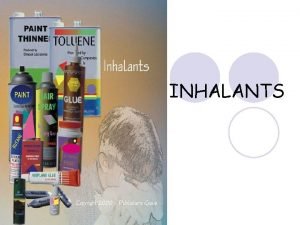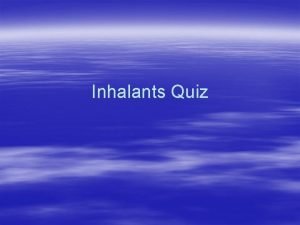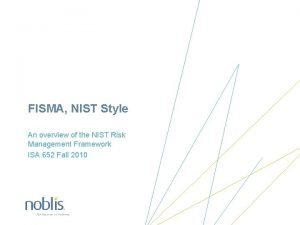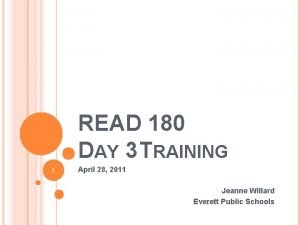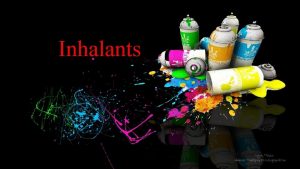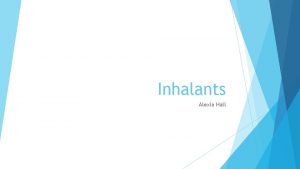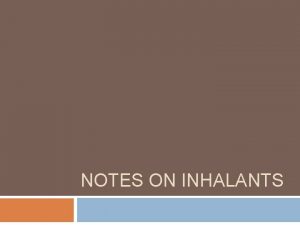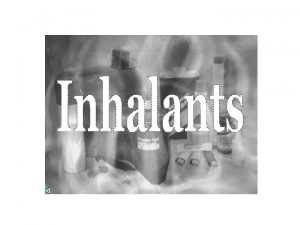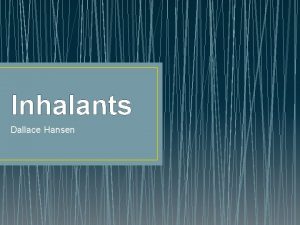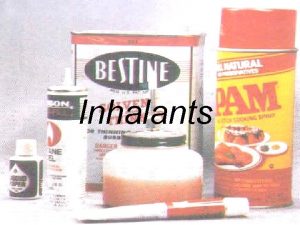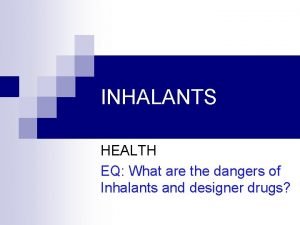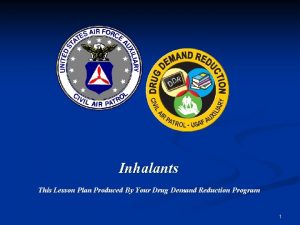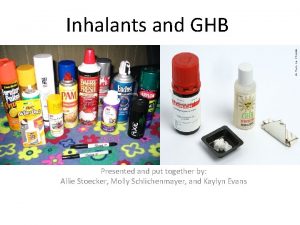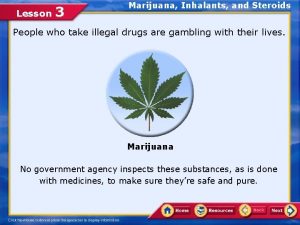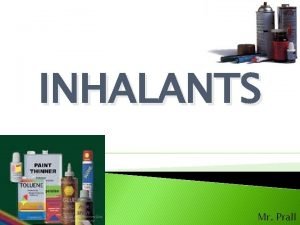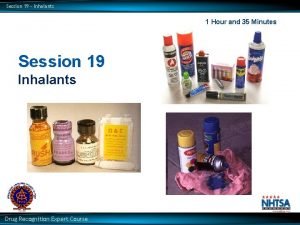Overview of Inhalants What are Inhalants Inhalants are


















- Slides: 18

Overview of Inhalants

What are Inhalants? Inhalants are a group of explosive substances whose chemical vapors can be inhaled to produce mind-altering effects on human beings.

Inhalant Abuse • Inhalant abuse refers to the deliberate inhalation or sniffing of common products found in homes and communities with the purpose of "getting high. " Inhalants are easily accessible, legal, everyday products. When used as intended, these products have a useful purpose in our lives and enhance the quality of life, but when intentionally misused, they can be deadly. • Inhalant Abuse is a lesser recognized form of substance abuse, but it is no less dangerous. Inhalants are addictive and are considered to be "gateway" drugs because children often progress from inhalants to illegal drug and alcohol abuse. The National Institute on Drug Abuse reports that one in five American teens have used Inhalants to get high.

Typical Inhalants Gases Nitrous oxide, helium, refrigerants, propane Cleaning Agents Spot remover, degreaser Solvents and Fuels Butane propane, nail polish remover, paint thinner/remover, correction fluid, permanent markers, gasoline, engine octane boosters, jet fuel

Be On Alert! Aerosols Spray paint, hair spray, air freshener, deodorant, fabric protector, computer keyboard cleaners Adhesives Model airplane glue, rubber cement, PVC cement Foods Cooking spray, aerosol whipped cream toppings

Effects of Inhalants Effects on the Mind: Effects similar to those of other drugs; addictive. Inhalants give a quick high while destroying brain cells. Symptoms Include: Dizziness, paranoia, depression, and impaired judgment Nervous system and brain damage Sometimes irreversible damage to liver and kidneys, bone marrow Hearing loss Sudden Sniffing Death Syndrome Children can die the first time or any time Usually associated with cardiac arrest.

Short Term Effects • Headache • Muscle weakness • Abdominal pain • Severe mood swings • Violent behavior • Slurred speech • Numbness, tingling in hands and feet • Fatigue • Lack of coordination • Apathy • Impaired judgment • Dizziness • Lethargy • Stupor • Loss of consciousness • Limb spasms • Visual disturbances

Long Term Effects • Weight loss • Muscle weakness • Disorientation • Inattentiveness • Lack of coordination • Irritability • Depression

Intentional Inhalation Deliberate inhalation of fumes, vapors or gases to “get high”

Slang Terms • Aimies Heart-on Quicksilver • Air blast Highball Rush • Bagging Hippie crack Rush snappers • Bolt Honey oil Shoot the Breeze • Boppers Laughing Gas Snotballs • Buzz bomb Moon Gas Thrust • Chroming Oz Tolly • Climax Pearls Toncho • Dusting Poormans pot Whippets

Intentional Scenario #1 A teenager is hanging out with friends at a beach house party, when suddenly one of his friends walks up with a can of dusting spray and tells the teenager to try a new thing called “dusting”. The friend explains how to use it and that it makes you feel good and relaxed. A cadet from the local squadron overhears this conversation, and proceeds to act. Telling the teenager that it could kill you and ruin his reputation, however, the friend tells the cadet its fine and nothing can hurt him. Knowing the effects on what it can do to the teenager, what should you do to ensure proper safety?

Intentional Scenario #2 After a terrible week in school, a teenager is tired of constantly feeling depressed and overheard a friends conversation about a new thing called “huffing”. Huffing is where one takes an intoxicated chemical, puts it into a bag and breaths in to result in a high that supposedly lifts you spirit. . The teenager was telling his friend about the rough week he has had and how he plans to resolve it. The friend who is a cadet in the local squadron immediately tells him not to do it and tells him the effects it could have on his life. After telling him this teenager refuses to say he won’t do it. What should the cadet do to ensure the teenagers safety?

Accidental Inhalation A situation created by the accumulation of fumes in an enclosed area, that can be overcoming to a person or animal.

Accidental Scenario #1 Cadets are preparing for an Orientation Flight and are checking the fuel in the plane for debris. While returning the fuel in the canister to the plane, the fuel accidentally spills onto one of the cadets boots. Not assessing the damage, the cadets and senior member load up in the plane and take off. After a while the fumes of the gasoline contaminate the cockpit and knock the pilot out. To prevent this, cadets and senior members should take proper measures to ensure the fumes do not contaminate the cockpit. Wash the contaminated boots with water and soap to ensure proper safety.

Accidental Scenario #2 A squadron is repainting their rockets for the rocketry program. With several cans of paint opened, the FBO is filled with fumes with nothing to air the fumes out. After an hour of work, a cadet starts to fill light headed and a nearby senior member shows concern. The concerned senior member asks the cadet what wrong and escorts him to the door. Outside the SM ask the cadet to lie down. To prevent the problem, the area should be properly aired out with the doors and windows open, and if needed using fans.

Treatment is Challenging • Traditional drug treatment facilities do not like to admit inhalant abusers • Failure rate is very high • Treatment takes months, possibly years • Addiction to inhalants is as strong as that to cocaine

For Emergencies • If the victim is unconscious or not breathing • Call 911 and administer CPR • If conscious, keep the victim calm and in a well-ventilated area • Call Poison Control • Check for clues, try to identify product abused • Do not leave the victim alone

References • www. inhalant. org is a great resource for parents, teachers, CAP DDR officers, cadets, and other CAP members. Created for National Civil Air Patrol by MERSC-096 Low County Composite Squadron
 Mikael ferm
Mikael ferm Delphi w1010
Delphi w1010 Most inhalants are actually intended to be _______________
Most inhalants are actually intended to be _______________ What is windows azure platform
What is windows azure platform Sap basis overview
Sap basis overview Introduction to accounting software
Introduction to accounting software Fisma overview
Fisma overview Texas public school finance overview
Texas public school finance overview Product line depth
Product line depth Sap pb00
Sap pb00 Android programming overview
Android programming overview Cuda overview
Cuda overview System design overview
System design overview Solar massachusetts renewable target (smart) program
Solar massachusetts renewable target (smart) program Amway 6-4-3 marketing plan
Amway 6-4-3 marketing plan Virtex 7 family overview
Virtex 7 family overview Whats read 180
Whats read 180 Cpars overview
Cpars overview Distoclusion definition
Distoclusion definition

